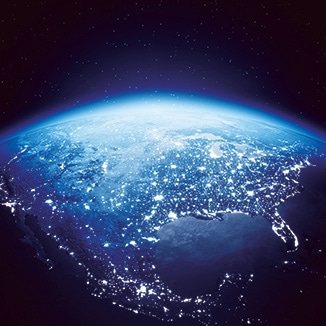A recent report by the U.S. Department of Commerce’s International Trade Commission says civil nuclear energy is expected to remain a growing market in 2018. The report estimates the global civil nuclear market to be valued between $500 and $740 billion over the next 10 years and to have the potential to generate more than $100 billion in U.S. exports and thousands of new jobs.
Among some of the key developments fueling civil nuclear energy growth internationally:
- The Paris Climate Conference’s recognition of the importance of nuclear energy to meet global carbon reduction goals
- The Convention for Supplementary Compensation for Nuclear Damage (CSC) nuclear liability regime entering into force
- The emergence of China as the fastest-growing market for nuclear energy, and China’s plans to export its reactor technology
- Breakthroughs in bilateral civil nuclear cooperation
A Snapshot of U.S. and Global Landscapes for Civil Nuclear Energy
The U.S. Department of Energy (DOE) supports the domestic development of the U.S. civil nuclear industry through initiatives such as the DOE loan guarantee programs, 50-50 cost share with the federal government for small, modular reactor development and deployment, and the recent launch of the Gateway for Accelerated Innovation (GAIN) to support advanced reactor development and deployment.
Despite the DOE’s support, challenges to nuclear deployment in the United States remain, including the high capital cost to build a plant, long and uncertain construction lead time, record low natural gas prices, preferential grid access for renewable energy-based generation, and the lack of growth in electricity demand since 2004.
Globally, 444 nuclear reactors with a combined 386 GWe capacity operate in 30 countries and 65 reactors are under construction in 15 countries. The OECD International Energy Agency 2015 Global Energy Outlook Report projects that nuclear power will have to double by 2050 for the world to meet international climate change goals and the energy needs of an expanding global population, which is expected to grow to 10 billion by 2050. Many countries continue to express interest in developing or expanding their nuclear programs, although low oil and gas prices could make it harder for governments to favor policies that encourage the use of nuclear energy and other clean energy sources.
Nuclear markets are shifting from the United States and Western Europe to East Asia, the Middle East, South America, and Eastern and Central Europe. This trend has important implications for the global nuclear landscape after 2030.
Civil Nuclear Energy: Challenges and Opportunities
Despite the strength of the U.S. civil nuclear industry, it continues to lose significant market share to an ever‐increasing number of foreign government-owned or led competitors, including Russia, Japan, France, China, and the Republic of Korea. Unlike its foreign competitors, the U.S. government does not own any part of U.S. reactor design companies. Further, the U.S. government does not provide sovereign backing for its companies, which places them at a competitive disadvantage in the areas of financing, commercial incentives, and liability insurance.
According to IEA, Challenges for the U.S. civil nuclear energy industry include:
- The need for additional bilateral civil nuclear cooperation agreements (Section 123 Agreements), which are required under U.S. law for U.S. companies to export significant reactor equipment and components
- A vital but complicated export control process, including export controls under the jurisdiction of the U.S. NRC, DOE, the State Department, and the Commerce Department’s Bureau of Industry and Security (BIS)
- An inadequate global nuclear liability regime, although the April 2015 entry into force of the CSC—and its expansion—will mitigate liability risks for U.S. civil nuclear companies doing business internationally
- Erosion of U.S. manufacturing capacity: U.S. companies no longer manufacture reactor vessels and steam generators
IEA says Challenges faced by all global participants in the sector include:
- Financing nuclear power plants, which require long construction periods and high upfront capital costs that are not recouped until the plant begins generating electricity
- Infrastructure research, development, and demonstration (RD&D), which requires training a skilled workforce, a nuclear manufacturing supply chain, an effective, independent and transparent regulatory infrastructure, and adequate RD&D resources
- A need for spent fuel disposal pathways, particularly for emerging and small fleet markets
- A need for better recognition of nuclear energy’s role in addressing climate change
- Public acceptance of nuclear energy
Despite these challenges, U.S. civil nuclear companies are leading innovators in global nuclear energy technology and have more than five decades of experience designing, constructing, upgrading, managing, and decommissioning nuclear power plants. The American industry has many competitive strengths, including its history as a pioneer of civil nuclear energy, and its status as the home for top-performing companies across the supply chain. In addition, the U.S. has a reputation for supporting the development of local industry and helping to deepen long-term bilateral relationships, as well as a regulatory system that is recognized as the global “gold standard” for nuclear safety. These factors should continue to serve the domestic civil nuclear industry well as the global market for nuclear energy continues to grow.

